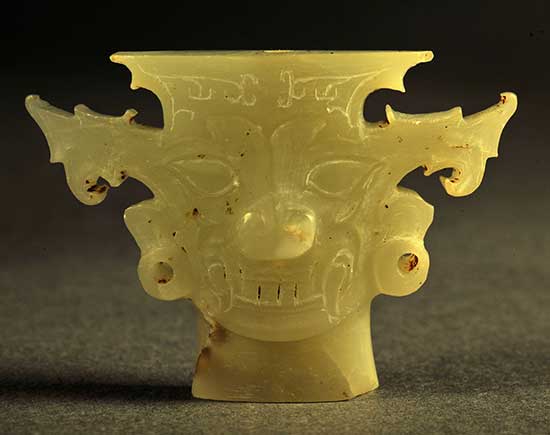Green mysteries
Updated: 2016-01-19 08:50
By Lei Xiaoxun/Zhou Lihua/Liu Kun(China Daily)
|
|||||||||||
Over China's long history, such as in the mid-Neolithic period between 7,000 and 8,000 years ago, people living in the country's northeast had already developed the custom of carving the pretty stones into special tools or jewelry.
By about 4,000 BC, jade-making reached its first peak in the late Neolithic period. Four major, regionally based jadeware production hubs gradually came into existence: the Hongshan Culture in the northeast, the Liangzhu Culture in the east and lower reaches of the Yangtze River, the Longshan Culture (now Shandong province) and the Qijia Culture in Northwest China.
"Jadeware of the Shang Dynasty was greatly influenced by Shijiahe jadeware", says Ding Zhe, president of the Chinese Society of Ancient Jade, a Beijing-based NGO.
"The relief lines and the way that Shijiahe jade carvers engraved animal and human eyes in the Shang Dynasty can trace their origins back to the Shijiahe Culture," he adds. Most of the Shijiahe pieces are made from nephrite, a silicate mineral that is greenish white in color with a glasslike shiny surface.
Eyes of both Shijiahe jades and Shang jades are carved in the similar shape of Chinese character chen (minister of a monarch).
Related Stories
Exquisite jade pieces of Mughal period on display at HK 2015-12-01 16:38
Nanyang brings jade culture to the capital
2015-12-01 14:12
Exquisite gold and jade products go on display in Beijing 2015-11-30 08:26
20 million yuan jade banquet 2015-09-30 11:22
Jade carving pieces shown off in Karamay 2015-08-21 15:58
Today's Top News
China's growth envy of developed world
Foreigners find hard to but China's rail tickets
Rags to riches saga underlines China's transformation
Leaders address Iran's thirst for growth
UK's interest in China boosted by BBC TV series
Global push
AIIB chief vows to run clean, lean, green institution
'More Europe' to deal with 'triple crisis'
Hot Topics
Lunar probe , China growth forecasts, Emission rules get tougher, China seen through 'colored lens', International board,
Editor's Picks

|

|

|

|

|

|







